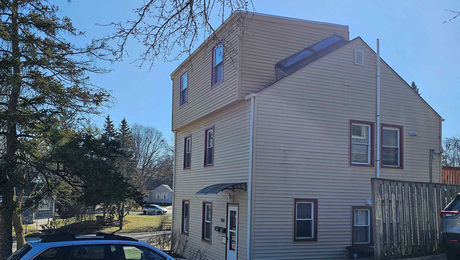Podcast 259: Flexicron Door Finish, Basement Living Space, and a Defective Tile Dilemma
Rob, Kiley, and Patrick hear from listeners about floor squeaks, building codes in New Zealand, and construction-themed songwriting, before taking listener questions on clad patio doors, fieldstone foundations, and crazed tile.
Follow the Fine Homebuilding Podcast on your favorite app. Subscribe now and don’t miss an episode:
 |
 |
Mike wrote in with info on screws that stop floor squeaks. Rick shares a song with an electrifying theme. John writes in with observations on housing in New Zealand. Mark says not to spray foam metal buildings. Gary asks if Flexicron finish is paint. John asks if it’s safe to make living space in a walkout fieldstone foundation. Kurt wants to know what to do about his tile backsplash with cracked glaze.
Editor Updates:
Rob: Kayak rack
Kiley: Desk treadmill
Jeff: Managing ladders
Patrick: New hire
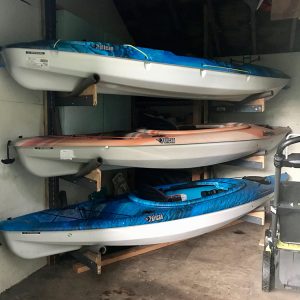 |
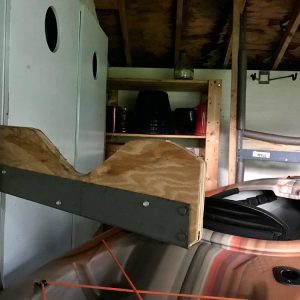 |
 |
 |
Listener Feedback 1:
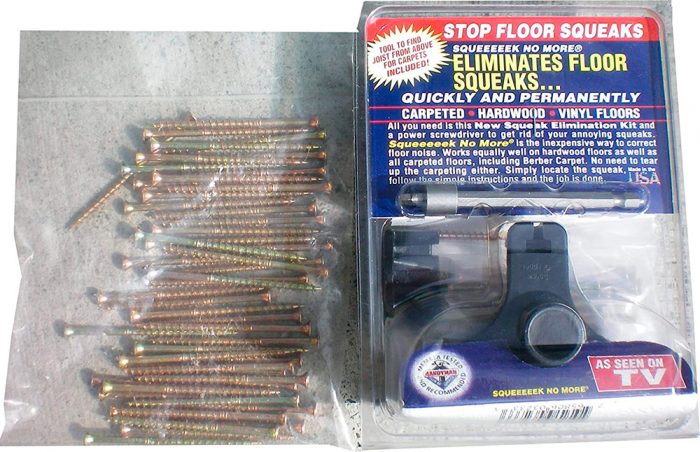
That being said, when I redid my hardwood floor, I spent days drawing out my floor joists and identifying every squeak and getting rid of it with the squeeek no more screws. I used 100 screws for about 550 sqft of floor.
That was about two years ago. I am sad to say the floor now squeaks where I didn’t use the screws. Looking back, I should have used them on the entire floor in a pattern after fixing the problem areas. Oh well!
Related links:
- Squeeeeek No More Floor Screws 250 per Package (Amazon.com – FHB earns a small commission on all amazon links on our site)
Listener Feedback 2:
Rick writes: I noticed you played a bit of audio for a place-name pronunciation. What about a bit of suitable music? I was listening to a favourite today; Colin Linden, and thought, he must have dealt with an old house at some point, leading him to this song; ‘Knob and Tube’ from his album; Rich in Love.
My house in Guelph Ontario was moved to its site in 1930 and when I got it, it had all knob and tube, fed by a ‘panel’ of two 15 amp screw-in fuses in a ceramic block. Now 200 amp, but amazing they had lived with that for 50 years.
Anyways, it is relatively brief, maybe for the next time you get a question on Knob and Tubery. And I’m sure he is only talking about wiring. 😉
He is 1/3 of Blackie and the Rodeo Kings, also a well established producer; worked on ‘Oh Brother Where Art Thou’ as I remember.
Enjoy
Related links:
- Podcast Episode 143: Get Rid of That Scary Knob-and-Tube Wiring
- 15 Places With Strange Names (and How They Got Them)
Listener Feedback 3:
John asked for more info about codes in the rest of the world in episode 253. As luck would have it, we heard from Chris who’s from Colorado, but he’s spent some time living in New Zealand.
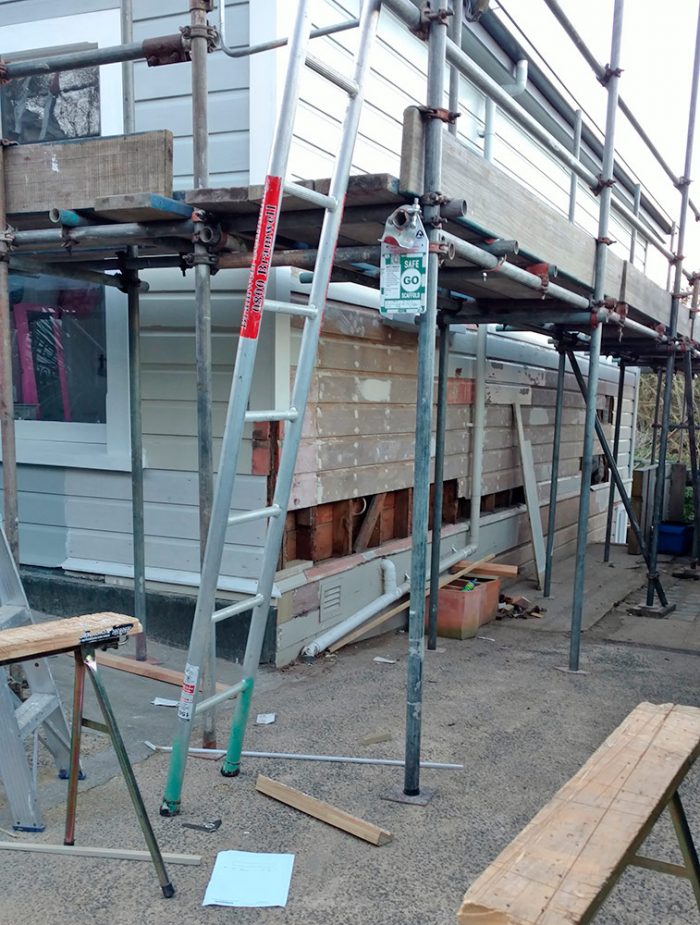
The climate in NZ is more subarctic then subtropical, as the south end of the south island is about 1700 miles to the Antarctica land mass. The north end of the north island can be warm but I lived closer to the southern end. There are 3 climate zones, with the coldest being in the central mountains of the south island. I lived in Dunedin, which is on the water. The warmest it would really get in the summer was 80F and usually the coldest in the winter was 25F. But the humidity! Since I normally live in Colorado the humidity changed everything about those temperatures. 25F in Colorado, when it is sunny, is shirt sleeves and shorts! But not in Dunedin.
I’ve included a photo I took that demonstrates what the Kiwi’s are working with. If you can see it, that wall cavity isn’t insulated. And they never bothered stuffing it either, when they finished up their repair. Everything is expensive, the housing stock is very old and people are very reluctant to spend any money on improving their houses. To the detriment of their health. The rates of asthma are incredible!
All rental properties in New Zealand must meet the Healthy Homes Standards by 1 July 2024.
The Healthy Homes Standards (HHS) are:
• Heating – Rental homes must have fixed heating devices in living rooms, which can warm rooms to at least 18°C. Some heating devices are inefficient, unaffordable or unhealthy, and they will not meet the heating standard requirements.
• Insulation – Rental homes must have ceiling and underfloor insulation which either meets the 2008 Building Code, or (for existing ceiling insulation) is at least 120mm thick.
• Ventilation – Rental homes must have the right size extractor fans in kitchens and bathrooms, and opening windows in the living room, dining room, kitchen and bedrooms.
• Moisture and drainage – Rental homes must have efficient drainage and guttering, downpipes and drains. If a rental home has an enclosed subfloor, it must have a ground moisture barrier if it’s possible to install one.
• Draught-stopping – Rental homes must have no unnecessary gaps or holes in walls, ceilings, windows, floors, and doors that cause noticeable draughts. All unused chimneys and fireplaces must be blocked.
Under the current requirements of the Residential Tenancies Act, landlords must ensure that their rental properties have the right ceiling and underfloor insulation by 1 July 2019.
That’s right, only for the last year has insulation under the floor been required! Typically, only 1 room or hallway would have a heater and the other rooms would just be cold. You are supposed to use a hot water bottle to get the bed ready at night. Hmm, I don’t miss those cold wet sheets at all! I would come home from work, in January (middle of summer mind you) and my wife would have a hat and puffy jacket on. It would be about 60F inside the house.
Some of the poor housing stock is a result of the “leaky houses” syndrome that swept NZ in the 90’s-2000’s. This was a result of poor flashing and attention to detail. Other issues are that electricity is very expensive, NZD 0.25-.44/kWh. About 80% of the electricity is renewable though. And so many things are imported and the market is so small overall that items are really expensive.
While I was living in Dunedin, this family that I knew built the first passive house in NZ. Imagine the cost of German triple pane windows in the US and then multiply by 3-4 then convert into the Pacific Peso (kiwi dollar is about 65% of the USD).
Related links:
- New Zealand Building Code requirements for house insulation
- New Zealand Tenancy Healthy Homes Standards (HHS)
Listener Feedback 4:
Mark writes: Howdy ‘Casters, In the episode 253 lightning round, a person in Tucson asked about using spray foam on the underside of a metal roof. Back in the 90s, I sprayed the entire inside of a metal building in Colorado. It worked great for air sealing and insulation. It also made the walls much more rigid.
Metal liner panel was added to the interior walls for fire protection.
Code also required the foam on the ceiling to be covered with a fire barrier.
When we decided to sell the property 20 years later the sun had badly faded the paint on the metal roof, probably due to the excess heat created by the spray foam. I’d be much more concerned about this than condensation in Tucson.
We determined that there is no easy way to remove metal roofing glued to the purlins with spray foam. The only viable option was to add a second layer of metal roofing on hat channels over the original roof. Based on that experience, I would never use spray foam under a metal roof without some kind of separation layer. The standard vinyl covered roll insulation made for metal buildings seems like a better choice.
In summary, insulating the roof of a shipping container with spray foam to prevent condensation is a great idea. Insulating the roof of a metal building with spray foam could be a very bad idea if you ever have to replace the roof. Keep up the good work!
Related links:
Question 1: Is the Flexicron coating on the interior of my doors just PVC, or is it really some sort of paint?
A listener writes, Hello, I love hearing your podcast, and am a frequent rewinder. My query may be something you have talked about in the past, but I haven’t heard it. I have a customer who hired me to install a gliding door in an opening in her home. After the 3rd set of specifications, I told my salesman that the homeowner was going to paint the door. My salesman suggested the prefinished interior option. I told him she would like painted wood on the inside, and he steered me to this option. When it arrived, it said “Vinyl clad” on the packaging, and my customer (88 year old widow-not kidding) was appalled.
I spent 80 minutes on the phone with (Andersen) customer service to finally be told by the “specialist” that the interior and exterior are vinyl clad. My salesman still tells me that he is being told the Flexicron finish is paint. I found an online reference to a Fine Homebuilding Discussion Forum (April 12, 2006) where a person called “sledgehammer” writes that Flexicron is paint. My main issue is that this Flexicron doesn’t act like paint, and I think most anyone who knows materials would say it’s PVC.
Is it really paint?
Please take a look at this page that my first (Andersen) customer service agent sent to me (By the way PPG says that Flexicron is an exterior finish).
Related links:
- Constructing Clear Communication With Your Clients
- Building Business: One Picture Saves a Thousand (Written) Words
Question 2: How can I make sure moisture from my stone-wall basement doesn’t cause problems after I insulate an air-seal my old house?
John from Ohio writes, Hey there! I’m a big fan of the show and the magazine, and felt a bit unsure about writing in since the other writers tend to be so eloquent. But I’ll give it a shot anyways. Last year I moved into an old c. 1860 townhouse in Over-the-Rhine (adjacent to downtown Cincinnati), with wood framing over a stone foundation. The wood structure is remarkably solid with no signs of rot or bug infestation in any of the joists or studs. I also discovered that there is little to no insulation, so I think the air flow has probably helped keep the wood dry and rot free. I’d like to look into air sealing and insulation, but I know you’ve said that the basement should be addressed before doing any air sealing. Our side foundation walls are shared with neighboring buildings, and don’t show any signs of moisture. The basement is quite dry and has tall (11′) ceilings with a walkout to our rear courtyard (the house is on a hillside), which makes me want to use the basement as some kind of livable space (workshop, playroom, storage, etc). The “uphill” foundation wall is under the sidewalk, and in our first year, we only once had any visible water seep through this foundation wall (after a long week of heavy rain). Even still, I worry about moisture so I run a fan and dehumidifier to keep humidity below 50%. What – if anything – should I do to address the stone foundation walls? I don’t like the idea of covering them because I worry I’ll just trap moisture with no place for the water to escape (the stone also looks cool). Any thoughts? Is there anything other than running fans/dehumidifiers that I should do to keep the basement dry? Once I tackle the basement, I’ll start working on air sealing and insulation on the upper floors. Thanks in advance!
Related links:
- Cure for a Leaky Stone Foundation
- Building Science Insights: Rubble Foundations
- Building America Reports: Renovating Your Basement
Question 3: How should I deal with cracks in the glaze on my new tile backsplash?

Also, is there no recourse here? The internet says ISO 10545-11 should ensure crazing testing or a disclaimer that the tile may craze, which Equipe Tile did not do here. My retailer is being as supportive as is reasonable with a potential product cost refund, but I’m the one paying all the labour.
Many thanks and keep up the awesome podcast!
Related links:
END NOTES:
- Please tell us what kind of saw horses you like: fhbpodcast@taunton.com.
- And check out our latest Project Guide: Drywall.
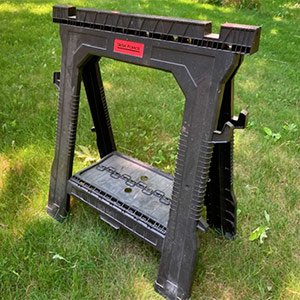 |
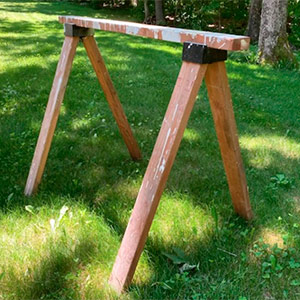 |
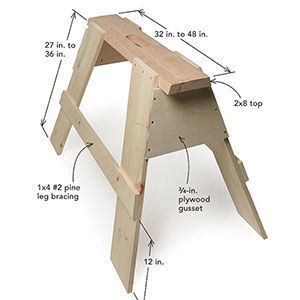 |
If you have any questions you would like us to dig into for a future show, shoot an email our way: fhbpodcast@taunton.com.
If we use your question we’ll send you a FHB Podcast sticker!
FHB Podcast T-shirts!
Represent your favorite podcast! Available in several styles and colors. Made from 100% cotton. Find the Podcast t-shirt and more cool products in the Fine Homebuilding Store.
Fine Homebuilding podcast listeners can now get 20% off anything in the Taunton store, including the The Visual Handbook of Building and Remodeling, 4th Edition.
Use the discount code FHBPODCAST to take advantage of this special offer.
We hope you will take advantage of a great offer for our podcast listeners: A special 20% off the discounted rate to subscribe to the Fine Homebuilding print magazine. That link goes to finehomebuilding.com/podoffer.
The show is driven by our listeners, so please subscribe and rate us on iTunes or Google Play, and if you have any questions you would like us to dig into for a future show, shoot an email our way: fhbpodcast@taunton.com. Also, be sure to follow Justin Fink and Fine Homebuilding on Instagram, and “like” the magazine on Facebook. Note that you can watch the show above, or on YouTube at the Fine Homebuilding YouTube Channel.
The Fine Homebuilding Podcast embodies Fine Homebuilding magazine’s commitment to the preservation of craftsmanship and the advancement of home performance in residential construction. The show is an informal but vigorous conversation about the techniques and principles that allow listeners to master their design and building challenges.
Other related links
-
- All FHB podcast show notes: FineHomebuilding.com/podcast.
- #KeepCraftAlive T-shirts and hats support scholarships for building trades students. So order some gear at KeepCraftAlive.org.
- The direct link to the online store is here.






